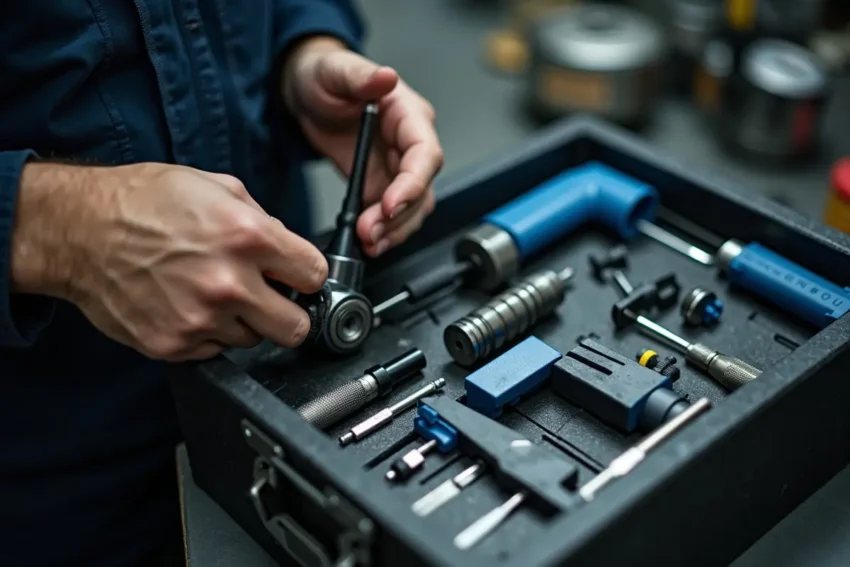Working in cramped or confined environments is a daily challenge for many tradespeople, technicians, and electrical contractors.
Whether you’re reaching behind appliances, navigating ceiling voids, or fixing panels in compact enclosures, the tools you choose can either make the task easier—or significantly harder. That’s where ergonomics plays a critical role. When space is tight, ergonomically designed tools help reduce strain, improve control, and ensure safety.
Determines Tool Usability in Restricted Environments
In tight working conditions, your body’s movement is naturally restricted. This means tools must adapt to your body, not the other way around.
Ergonomic design ensures tools fit comfortably in your hand, enabling better control and reducing unnecessary force or awkward postures. If a tool requires excessive twisting, overreaching, or finger strain, it becomes inefficient in a confined space.
For instance, a screwdriver with a wide, contoured grip allows a firmer hold with less effort. This is essential when your wrist can’t rotate freely due to surrounding obstructions. In contrast, tools without ergonomic support can lead to fatigue or errors after only a short period of use.
Improves Precision Where Manoeuvrability is Limited
Precision matters in tight spaces with limited visibility and movement. Ergonomic tools with balanced weight, contoured grips, and anti-slip surfaces help maintain control and accuracy when your wrist or arm movement is restricted.
Short-handle screwdrivers, offset allen keys, and flexible-head tools provide access where standard designs can’t. In close quarters, tools with minimal backlash offer more consistent, controlled engagement. This reduces the chance of overcorrection, helping prevent damage and the need for rework.
Helps Reduce Injury Risk
Tight spaces often force users into non-neutral wrist positions, which over time, can contribute to musculoskeletal disorders (MSDs) such as tendonitis or carpal tunnel syndrome. Ergonomic tools mitigate these risks by incorporating features that reduce strain on joints and muscles.
Features like palm-fit handles, soft-touch grips, and optimised weight distribution make it easier to apply consistent torque without overloading your tendons. Tools that are harder to grip or manipulate require more force, increasing the chance of strain-related injuries—particularly during repetitive tasks in enclosed work areas.
Enables Faster and Safer Task Completion
The more naturally a tool fits your grip and supports hand motion, the faster and safer your work becomes—especially in restricted conditions. Ergonomic tools minimise effort, improve reach, and reduce the need to constantly reposition.
In areas with limited visibility and access, this means fewer dropped tools, better grip retention, and quicker fastening. For example, well-designed sets like Wera screwdrivers and allen keys allow efficient handling in awkward positions, helping save valuable time across repetitive tasks.
An Investment in Long-Term Performance
While the ergonomic difference may feel subtle in a single task, the long-term benefits are substantial. Daily use of poorly designed tools in confined environments compounds physical strain, reduces productivity, and leads to higher tool replacement rates due to errors or mishandling.
Investing in ergonomically sound tools ensures:
- Reduced risk of fatigue and repetitive stress injuries
- Improved task efficiency under spatial constraints
- Greater accuracy and fewer mistakes in delicate applications
This is especially important for tradespeople who rely on sustained performance across long shifts in variable and often cramped conditions.
Smarter Tools for Tighter Spaces
Tool ergonomics isn’t just a matter of comfort—it’s central to working effectively and safely in tight spaces. When range of motion, grip strength, and visibility are compromised, ergonomically designed tools become essential. From reducing strain and injury to increasing control and productivity, tool choice guided by ergonomic principles can significantly improve outcomes for technicians and contractors alike.

